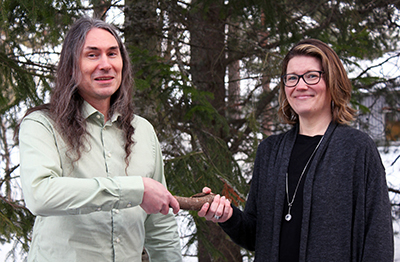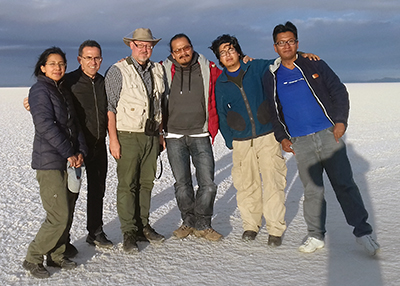Change of Leader at Bio4Energy Environment, Nutrient Recycling
The research and development platform Bio4Energy Environment and Nutrient Recycling has a new leader as of March 2022.
Nils Skoglund, associate professor at Bio4Energy host Umeå University, is taking over the platform leadership from Stina Jansson, who has the same title and affiliation, as she takes on more responsibilities for her home department.
The appointment has the blessing of the Bio4Energy Steering Group and Board.
“I am happy to take on this role and look forward to shouldering the responsibility”, Skoglund said.
As all seven Bio4Energy R&D platform leaders, he has a substantial science background; including in Chemistry, Biology and Earth Sciences; and holds a PhD in Energy Technology with specialisation in Thermal Process Chemistry. One of his focal areas is the recovery of phosphorus from biomass ash or organic waste.
He welcomed the confirmation of the continued funding by the Swedish government of the Bio4Energy research environment, which will continue at least until 2024. This would allow the platform to focus its work on medium-term goals, he said.
“I want to prioritise allowing our PhD students to attend at least one international conference each, to let them see the bigger picture of their research and allow them to meet colleagues who are interested in the same thing as themselves”, according to Skoglund.
“For a young researcher, this is important to promote the feeling that he or she is making a contribution”, he explained.
When it came to the research, Skoglund said he was keen for the platform to work focusedly to provide such scientific information that politicians could use to make decisions.
“I want us not only to develop facts and figures, but also to put them together in such a way that they can serve as a basis for decision-making”, Skoglund said.
In the last decade, the research collaboration on the platform has gone down three main avenues. They are the recovery of phosphorus, elimination of organic pollutants and nitrogen use; across the main biomass-based starting materials and their use. In the case of Bio4Energy, these latter are wood and forestry residue, industrial waste and microalgae.
For her part, the outgoing platform leader Jansson has been well-liked by her colleagues and credited with upholding a fruitful climate for discussion during her mandate.
“Changing platform leaders is a sign of health, as it changes the dynamic on the platform and things get looked at with fresh eyes”, said Jansson as she handed over the platforms reins—which took the form at the photo shoot of a relay baton axed from a tree branch—after four-and-a-half years in office.


 Bio4Energy ©2022
Bio4Energy ©2022



